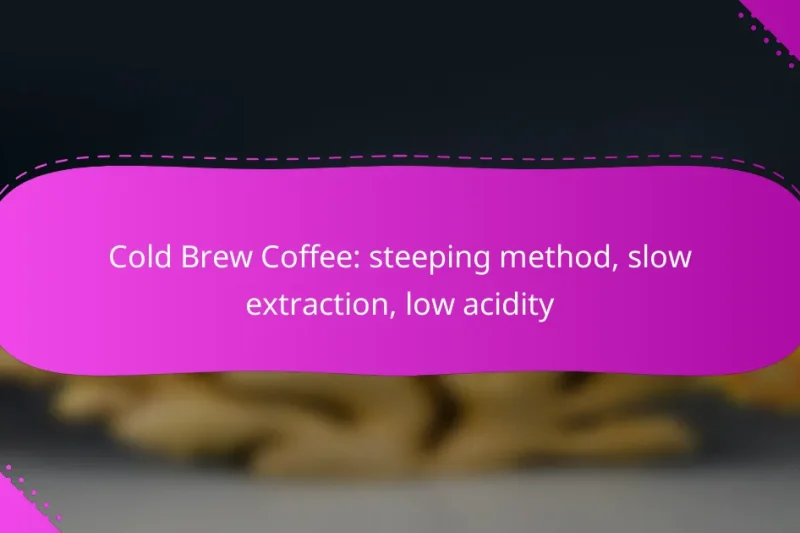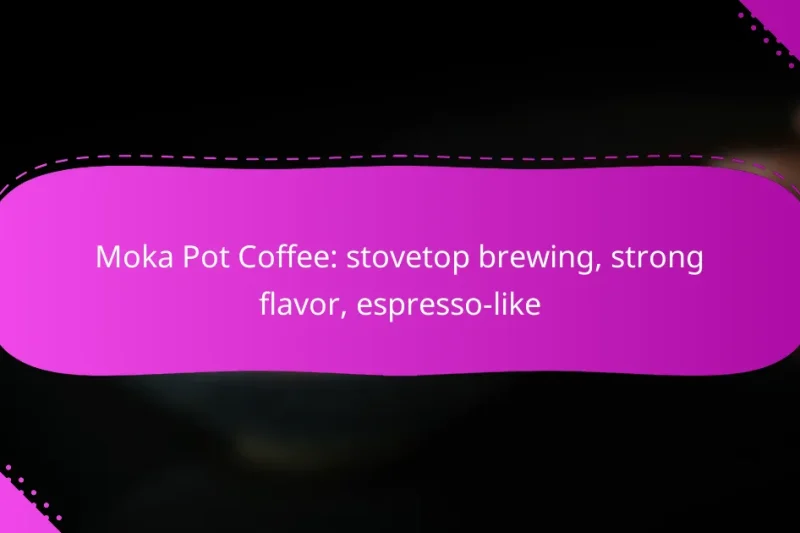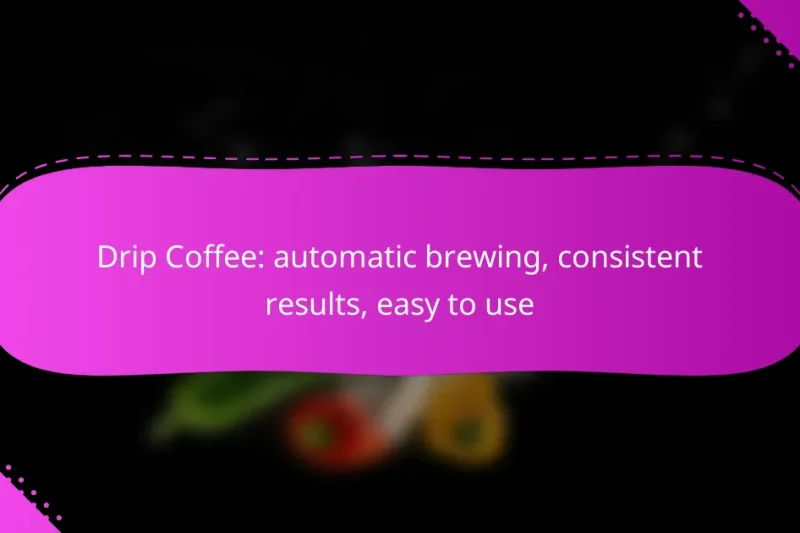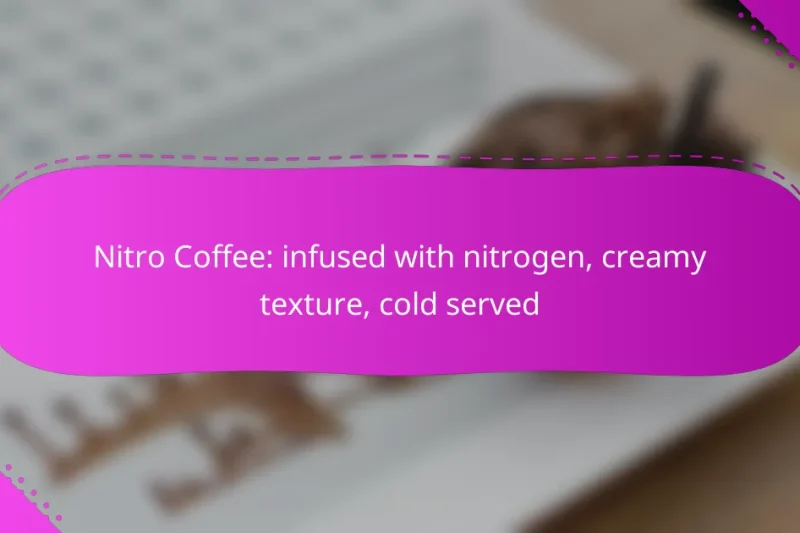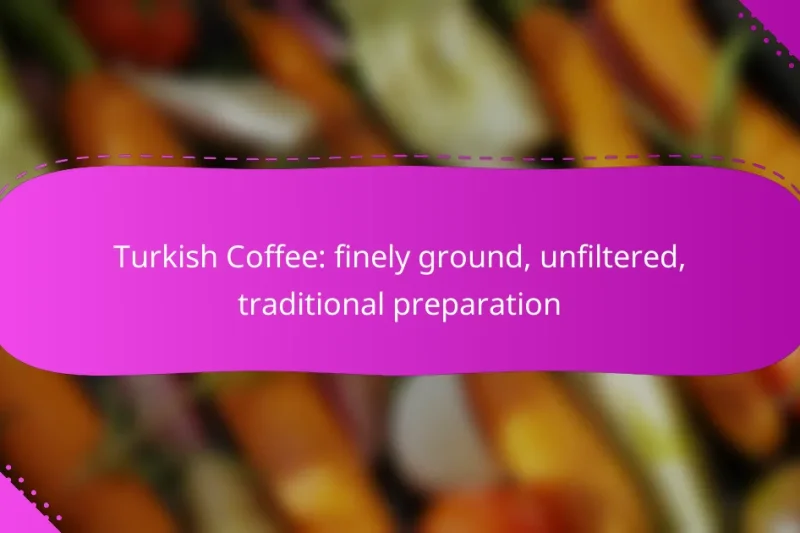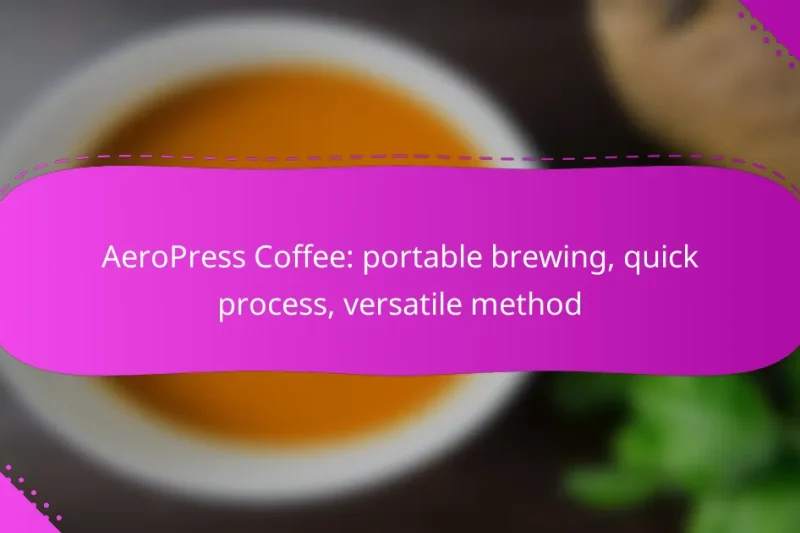Cold brew coffee is a unique brewing method that involves steeping coarsely ground coffee in cold … Cold Brew Coffee: steeping method, slow extraction, low acidityRead more
The Process of Brewing Different Coffee Types
Brewing coffee is an art that varies significantly across different methods, each offering unique flavors and experiences. In New Zealand, popular techniques such as pour-over, French press, espresso, Aeropress, and cold brew cater to diverse tastes and preferences. Understanding the nuances of each method can enhance your coffee enjoyment and help you discover your perfect brew.
Siphon Coffee: theatrical brewing, vacuum method, unique flavor
Siphon coffee brewing employs a vacuum method that transforms the coffee-making process into a captivating theatrical … Siphon Coffee: theatrical brewing, vacuum method, unique flavorRead more
Moka Pot Coffee: stovetop brewing, strong flavor, espresso-like
Moka Pot coffee is a popular stovetop brewing method that delivers a robust, espresso-like flavor. By … Moka Pot Coffee: stovetop brewing, strong flavor, espresso-likeRead more
Drip Coffee: automatic brewing, consistent results, easy to use
Drip coffee makers provide a convenient and reliable way to brew coffee, ensuring consistent flavor with … Drip Coffee: automatic brewing, consistent results, easy to useRead more
French Press Coffee: full-bodied, steeping method, rich flavor
French Press coffee is renowned for its full-bodied texture and rich flavor, making it a favorite … French Press Coffee: full-bodied, steeping method, rich flavorRead more
Chemex Coffee: elegant design, paper filter, smooth taste
Chemex Coffee combines elegant design with practical functionality, creating a smooth and flavorful cup that coffee … Chemex Coffee: elegant design, paper filter, smooth tasteRead more
Nitro Coffee: infused with nitrogen, creamy texture, cold served
Nitro coffee is a unique beverage created by infusing cold brew coffee with nitrogen gas, resulting … Nitro Coffee: infused with nitrogen, creamy texture, cold servedRead more
Turkish Coffee: finely ground, unfiltered, traditional preparation
Turkish coffee is a traditional beverage known for its finely ground, unfiltered preparation that delivers a … Turkish Coffee: finely ground, unfiltered, traditional preparationRead more
Medium Roast Coffee: balanced taste, versatile brewing, popular choice
Medium roast coffee is celebrated for its balanced taste, combining acidity, sweetness, and body in a … Medium Roast Coffee: balanced taste, versatile brewing, popular choiceRead more
AeroPress Coffee: portable brewing, quick process, versatile method
The AeroPress is a portable and versatile coffee brewing device that allows you to create a … AeroPress Coffee: portable brewing, quick process, versatile methodRead more
What are the best methods for brewing coffee in New Zealand?
The best methods for brewing coffee in New Zealand include pour-over, French press, espresso, Aeropress, and cold brew. Each method offers unique flavors and brewing experiences, catering to different tastes and preferences.
Pour-over coffee
Pour-over coffee is a manual brewing technique that allows for precise control over water flow and extraction time. This method typically involves a cone-shaped filter and a carafe, where hot water is poured over coffee grounds in a circular motion.
To achieve optimal flavor, use medium-fine coffee grounds and a water temperature of around 90-96°C. A common ratio is 1:15 coffee to water, adjusting based on personal taste.
French press coffee
The French press, or plunger pot, is a popular brewing method that immerses coffee grounds in hot water for several minutes. This results in a rich, full-bodied coffee due to the oils and fine particles retained in the brew.
For French press, coarsely grind your coffee and use a ratio of about 1:12 coffee to water. Steep for about 4 minutes before pressing down the plunger to separate the grounds.
Espresso brewing
Espresso brewing involves forcing hot water through finely-ground coffee at high pressure, resulting in a concentrated shot of coffee. This method is the foundation for many coffee drinks, such as lattes and cappuccinos.
Use a fine grind and a standard ratio of 1:2 coffee to water, aiming for a brew time of around 25-30 seconds. A quality espresso machine is essential for achieving the right pressure and temperature.
Aeropress coffee
The Aeropress is a versatile and portable brewing device that combines immersion and pressure brewing. It allows for quick brewing times and easy cleanup, making it a favorite among coffee enthusiasts.
For Aeropress, use a medium-fine grind and a coffee-to-water ratio of 1:15. Brew for about 30 seconds to 1 minute, then press down the plunger to extract the coffee.
Cold brew coffee
Cold brew coffee is made by steeping coarsely ground coffee in cold water for an extended period, typically 12-24 hours. This method results in a smooth, less acidic coffee that can be enjoyed over ice or diluted with milk or water.
Use a coffee-to-water ratio of about 1:4 for a concentrated brew. After steeping, strain the mixture through a fine mesh or coffee filter to separate the grounds from the liquid.
How does the pour-over coffee process work?
The pour-over coffee process involves manually pouring hot water over coffee grounds to extract flavors. This method allows for precise control over brewing time and water temperature, resulting in a clean and flavorful cup of coffee.
Equipment needed for pour-over
To brew pour-over coffee, you will need a few essential pieces of equipment. A pour-over dripper, such as a V60 or Chemex, is crucial for holding the coffee filter and grounds. Additionally, a gooseneck kettle allows for controlled pouring, while a scale helps measure coffee and water accurately.
Other useful items include coffee filters, freshly ground coffee beans, and a timer to track brewing time. Having a sturdy mug or carafe to catch the brewed coffee is also important.
Step-by-step pour-over instructions
Begin by measuring out your coffee and water. A common ratio is about 1:15, meaning for every gram of coffee, use 15 grams of water. Place the filter in the dripper and rinse it with hot water to eliminate any paper taste and preheat the dripper.
Next, add the coffee grounds to the filter and create a small well in the center. Start pouring hot water (around 90-96°C) slowly in a circular motion, ensuring all grounds are saturated. Let the coffee bloom for about 30 seconds before continuing to pour the remaining water in a steady stream. The total brewing time should be around 3 to 4 minutes.
Once the water has fully drained through the coffee grounds, remove the dripper and enjoy your freshly brewed pour-over coffee. Experiment with different grind sizes and pouring techniques to find your preferred flavor profile.
What are the key differences between French press and espresso?
The primary differences between French press and espresso lie in their brewing methods and resulting flavors. French press uses coarsely ground coffee steeped in hot water, while espresso forces hot water through finely ground coffee under pressure, leading to distinct taste profiles and textures.
Brewing time comparison
French press brewing typically takes about 4 to 5 minutes, allowing for a full extraction of flavors. In contrast, espresso brewing is much quicker, usually completed in around 25 to 30 seconds, which results in a concentrated shot of coffee.
This significant difference in brewing time affects not only the flavor but also the overall experience of preparing each type of coffee. For those who prefer a leisurely coffee-making process, the French press may be more appealing, while espresso suits those who want a quick caffeine fix.
Flavor profile differences
The flavor profile of French press coffee is often described as rich and full-bodied, with a heavier mouthfeel due to the oils and sediments retained in the brew. This method tends to highlight the coffee’s natural sweetness and complex flavors.
Espresso, on the other hand, delivers a bold and intense flavor with a creamy texture, often accompanied by a layer of crema on top. The pressure extraction process emphasizes the coffee’s acidity and can produce a more concentrated taste, making it ideal for various coffee-based drinks.
What equipment is essential for brewing coffee?
Essential equipment for brewing coffee includes a good grinder, a brewing device, and fresh coffee beans. Each piece of equipment plays a crucial role in determining the flavor and quality of the final cup.
Grinder types for coffee
There are two main types of coffee grinders: blade grinders and burr grinders. Blade grinders chop beans unevenly, which can lead to inconsistent extraction, while burr grinders crush beans uniformly, providing a more consistent grind size.
For optimal results, consider investing in a burr grinder, especially if you brew coffee regularly. Look for models that allow you to adjust the grind size, as different brewing methods require different coarseness.
Brewing devices overview
Common brewing devices include drip coffee makers, French presses, pour-over setups, and espresso machines. Each method has its unique characteristics and impacts the flavor profile of the coffee.
Drip coffee makers are convenient for making larger quantities, while French presses offer a rich, full-bodied brew. Pour-over methods provide control over brewing time and temperature, and espresso machines create concentrated coffee with a rich crema.
When choosing a brewing device, consider your coffee preferences, the amount you typically brew, and how much time you’re willing to invest in the process. Each method has its trade-offs in terms of flavor, convenience, and cleanup.
How do coffee beans affect the brewing process?
Coffee beans significantly influence the brewing process by determining flavor, aroma, and extraction efficiency. Factors such as bean origin and roast level play crucial roles in how the final cup tastes and how brewing methods should be adjusted.
Bean origin impact
The origin of coffee beans affects their flavor profile and acidity. Beans from regions like Ethiopia are often fruity and floral, while those from Brazil may have nutty and chocolatey notes. Understanding the origin helps in selecting the right brewing method to enhance these characteristics.
When brewing, consider the altitude and climate of the bean’s origin. Higher altitudes typically produce beans with more acidity and brightness, which may require shorter brewing times to avoid over-extraction. Conversely, lower-altitude beans may benefit from longer extraction times to fully develop their flavors.
Roast level influence
The roast level of coffee beans impacts the brewing process by altering solubility and flavor extraction. Light roasts tend to have higher acidity and require careful brewing to avoid bitterness, while dark roasts are more soluble and can handle longer brewing times.
For optimal results, adjust your brewing method based on the roast level. Light roasts are best brewed with methods like pour-over or Chemex, which allow for precise control over water temperature and flow rate. Dark roasts, on the other hand, can be effectively brewed using French press or espresso methods, which enhance their bold flavors.
What are the current coffee brewing trends in New Zealand?
New Zealand’s coffee brewing trends are increasingly focused on specialty coffee, innovative home brewing techniques, and sustainable practices. These trends reflect a growing appreciation for quality, convenience, and environmental responsibility among coffee enthusiasts.
Specialty coffee growth
The specialty coffee sector in New Zealand has seen significant growth, with more cafes and roasters emphasizing high-quality beans and unique brewing methods. This trend is driven by consumers’ desire for distinct flavors and experiences, often sourced from single-origin farms.
Many cafes now offer tasting flights, allowing customers to explore various beans and brewing styles. This approach not only enhances customer engagement but also educates them about the nuances of coffee production and preparation.
Home brewing innovations
Home brewing has become increasingly popular in New Zealand, with many coffee lovers investing in equipment that enhances their brewing experience. Devices like pour-over kits, espresso machines, and cold brew makers are widely available, catering to various preferences and budgets.
Innovative brewing methods, such as the use of precision scales and temperature-controlled kettles, allow enthusiasts to replicate café-quality coffee at home. This trend encourages experimentation and personalization, making coffee brewing a creative outlet for many.
Sustainable coffee practices
Sustainability is a key focus in New Zealand’s coffee scene, with many consumers prioritizing ethically sourced beans and eco-friendly practices. This includes supporting local roasters who emphasize direct trade and fair pricing for farmers.
Additionally, cafes are adopting practices like composting coffee grounds and using biodegradable cups. Consumers are encouraged to bring their own reusable containers, reducing waste and promoting a more sustainable coffee culture.
